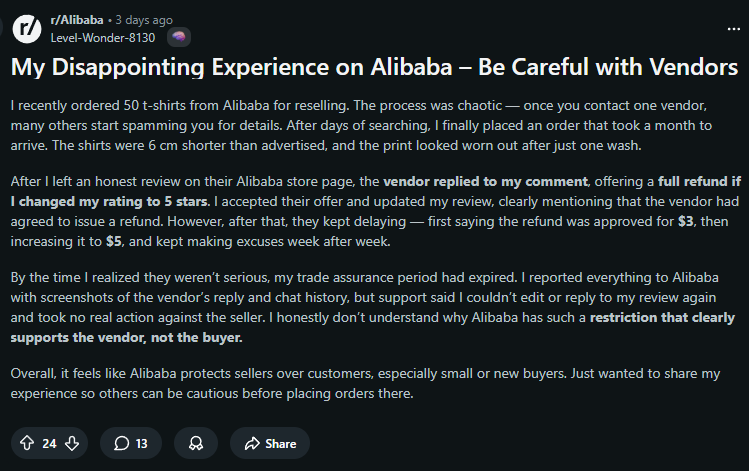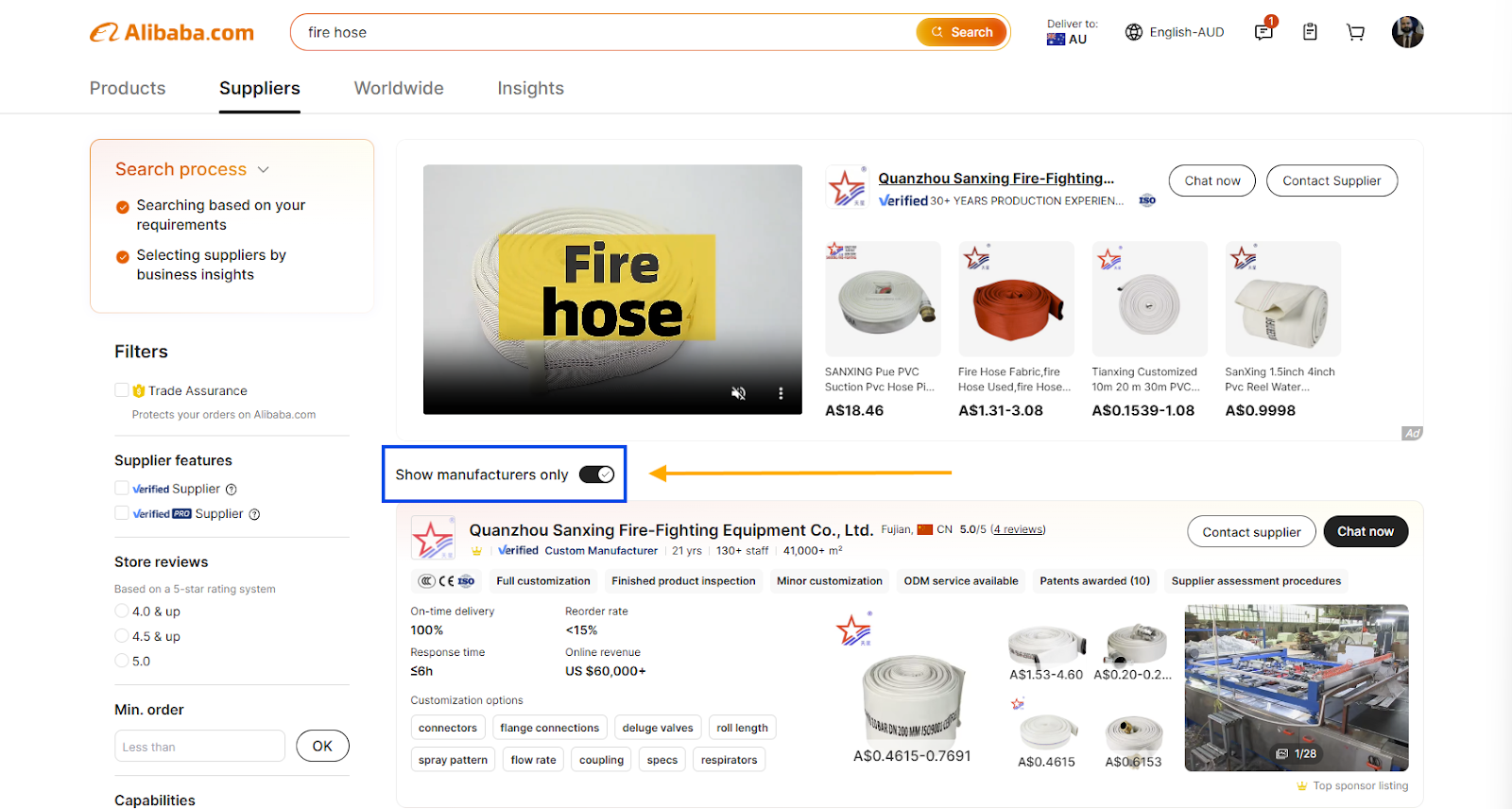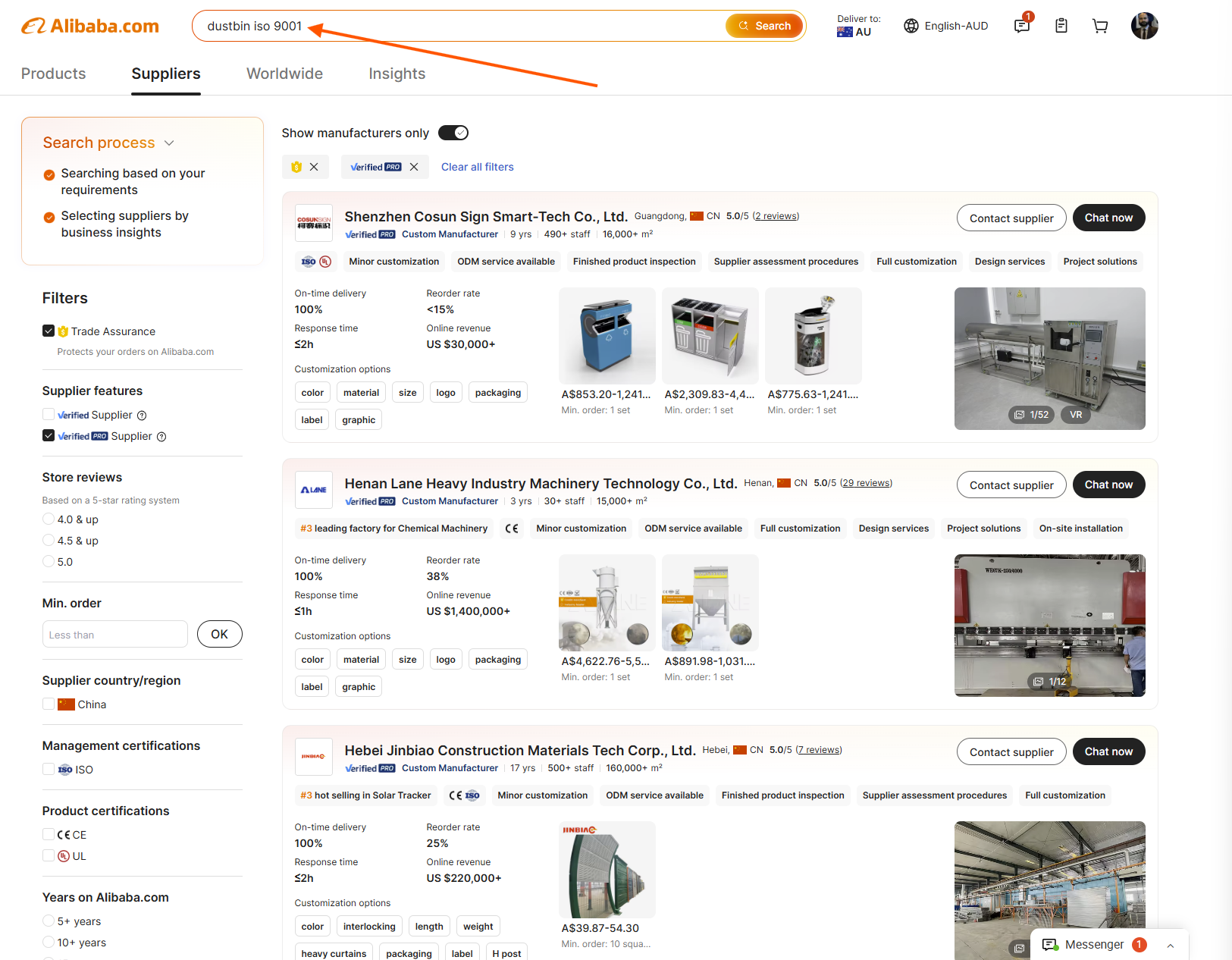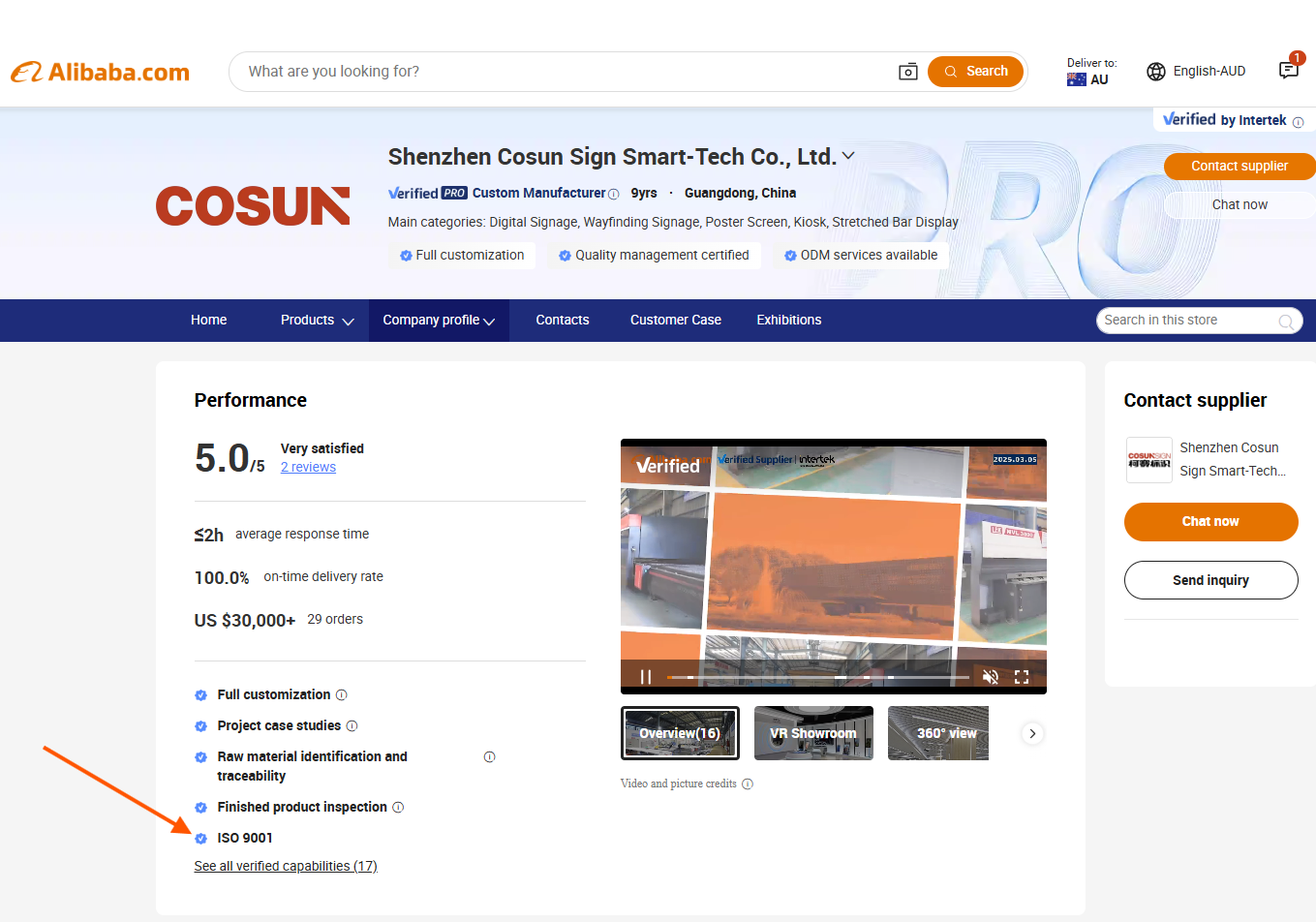“We thought we had a proper factory — until we got cartons of dirty cans and bottles. Quality inconsistency is a massive problem for us”
— Raj Rai, Director Charge .
This kind of story is all too common. Sourcing from China (or any overseas market) offers huge opportunity, but also nontrivial risk. The difference between a smooth order and a disaster often comes down to how well you verify suppliers—not just whether they look good on Alibaba, but whether they’re truly capable, trustworthy, and aligned with your quality standards.

Too many new importers treat Alibaba like a magic portal: click, order, done. In reality, success lies in careful vetting, layered verification, and risk management.
1. Why “Verified” Badges Only Get You So Far
Badges are comforting. Alibaba’s Verified Supplier, Gold Supplier, and Trade Assurance tags give you a quick filter. But they’re far from foolproof, Alibaba’s Verification Services include checks by independent third parties (SGS, TÜV, Intertek) across a supplier’s legal status, factory operations, and declared capabilities. (activities.alibaba.com)
But:
- Audits may be superficial or snapshot-based; factories can rent space, borrow machines for audits, or hide real operations.
- Alibaba itself notes: it does not guarantee the authenticity or quality of any product listed. (activities.alibaba.com)
- Many “Gold Supplier” badges are simply paid memberships with minimal verification. The “Verified Supplier” badge is more rigorous — but even that is a snapshot inspection, not a guarantee of long-term performance. (verifysupplier.org)
It’s worth noting that membership in the Verified Supplier program can cost suppliers roughly USD $12,500 per year — which means some may pursue it for the visibility, not because their factory is world-class.
Your work starts after you filter down, you need a multi-layered verification approach: start with digital signals and platform badges, then dig deeper with document checks, live inspection, reference validation, and third-party audit
2. How to Filter & Pre-Screen Suppliers on Alibaba (Smart Triage)
💡 When a supplier shares a document, check if the registered Chinese name (in characters) matches what they claim in their Alibaba profile. Many fraudulent suppliers borrow or fake documentation with mismatched names.
2.1 Use the right filters & search techniques
- Make sure you are searching in the supplier directory and not just the product directory


- Tick “Verified Supplier PRO”, this shows only suppliers with a minimum of 5 years industry presence. It is not the same as “Time on Alibaba”, which is a separate filter on it own
We also recommend “Trade Assurance”, filters to narrow results.

- Use keyword modifiers like “factory”, “OEM”, “ISO 9001” in your product search. We recommend mostly using a quality certification in searches as it helps to pinpoint factories that follow rigorous quality procedures.
Globally, it's estimated that 85% of manufacturing defects trace back to failures in quality control processes, not just bad materials.
If you look at the example below:

Let’s click on the first factory in the results:

You can see that the factory does indeed hold an ISO9001 certification. Obviously, you will still ask them to show you the certificate (and verify) but this is a great filtration point. Be very mindful of the words you put in that search box!
- You can also sort by “Transaction Level” to surface suppliers with higher sales volume or buyer activity.
- Check “Main Markets,” “Export Percentage,” and “Years in Business” stats. This is obviously subjective and dependent on your target market but, generally, the factories that are producing for the EU have to uphold high quality standards to meet their clients compliance demands.
💡Red flags:
- The listing claims “factory” but the company name or address is residential or a small office building
- Zero or very low exports even though they claim “main markets” abroad
- Contradictions between listing data (e.g. a “factory” that lists only a few product SKUs or no heavy machinery photos)
2.2 Scrutinize the company profile & request documents
- Ask the supplier to send a business license, tax registration certificate, export license (if applicable).
- Check whether the name (in Chinese) on the license matches what’s on Alibaba.
- Use China’s National Enterprise Credit Information Publicity System (NECIPS) or equivalent regional registries to verify registration and status.Check that the business scope on the license includes the product type they claim to make (i.e. they are legally allowed to manufacture your product) SVI Global Ltd. Supplier verification guide
- Ask for relevant product certifications (CE, RoHS, FCC, etc.) and ask for their registration number (so you can verify with the certifying body).
💡Red flags:
- The supplier delays or refuses to send scanned copies of licenses or only sends images that are blurry or edited
- The Chinese name / address / legal representative name on the documents differs from their Alibaba profile
- The business scope doesn’t include manufacturing or export/import operations
- Certification number does not show up when you check the issuing database
- The license is very recent (e.g. less than 1 year) for a company claiming large capacity
2.3 Factory checks, not just samples
Order a sample — but don’t stop there. Also request:
- Photos or video walkthroughs of their production floor. Visual evidence gives you indirect insight into factory capacity, machine types, workflow
- Production line or workshop images
- Past product QC reports to show whether the supplier has had formal inspections — and whether they passed or failed.
- Check consistency across platforms — search the same company name on other B2B sites (Global Sources, Made-in-China and trade fair sites). If their details (address, contact, product range) line up, that’s confidence-building.
- Compare how sample units perform against your full spec (materials, tolerances, finishing).
💡Red flags:
- The sample is of much better quality than what the photos show of the production workshop (i.e. sample was “dressed up”)
- Videos or photos are stock or clearly staged (same angles, poor lighting, no depth)
- Supplier is unwilling or reluctant to produce test reports or refuses to show raw materials
- The sample does not include key metrics you asked for (e.g. thickness, strength, tolerances)
2.4 Leverage Alibaba’s “Assessed Supplier / Verification Services”
Alibaba offers an Assessed Supplier service: they commission third-party agencies to audit supplier operations and publish a report (including factory inspection, capacity, management). Alibaba Reads
Look at what the audit actually covered — if it’s just front-office or showrooms, that’s weak. Focus on whether they inspected core production lines, raw material storage, QC labs, etc.
2.5 Test communication & ask tough questions
- Test their communication flow and proficiency. This sounds simple but is one of the key building blocks of a good supplier relation and ultimately a smooth supply chain. I am not just talking about their language efficiency, I am talking about their willingness to ask questions, the depth of their responses, their speed of response and an effort to understand your product and your business.
- Bigger factories will often have low level employees handling Alibaba queries, if your query is important enough it can be escalated to senior and more knowledgeable people in the company.
- Ask for reference clients or orders in your region and contact them (if possible) to verify experience.
3. Asking Tough Questions & Live Walkthroughs
Filtering gets you down to a shortlist. Now it’s time to dig deeper.
- Ask technical, process questions — e.g. “Which injection molding machine brands do you use? What is your shrinkage tolerance for this polymer?”
- Request a live video factory tour — ask them to pan slowly across raw materials, machines, workstations. If they hesitate or freeze the camera, that’s a red flag.
💡Industry veterans often say only 5% of Chinese factories consistently maintain high-quality systems. Rest will fluctuate depending on orders, cost pressure, or management changes.
4. Beyond Alibaba: Diversify Your Supplier Sources
Relying solely on Alibaba is risky. Here are alternatives you should weave into your sourcing strategy:
4.1 Global Sources, Made-in-China, 1688
- Global Sources applies stricter vetting and financial audits than many Alibaba listings.
- Made-in-China.com often features more factory-direct listings.
- 1688.com is the Chinese domestic B2B marketplace. It often includes factories that don't list globally—but you’ll need a Chinese agent or translator to navigate it.
4.2 Trade shows & fairs
- Shows like Canton Fair, Global Sources Fair, regional expos in Yiwu or Shenzhen let you meet in person, inspect sample production, and test cultural fit.
- Being able to walk the factory floor reveals things that audits or videos won’t show (raw material storage, workflow, cleanliness).
4.3 Sourcing agents & third-party auditors
- Use local sourcing agents to visit factories, negotiate, and act as your eyes on the ground. A sourcing agent (right one) can be your eyes and ears in China. They know the people, the market and are equipped to deal with the Chinese industry much better than any foreigners
- Engage audit firms (SGS, Intertek, Bureau Veritas) Engage a third-party audit / inspection firm to perform:
- Factory audit (pre-contract) assessing capability, compliance, social factors
- During-production inspections (DPI) to catch issues mid-manufacture
- Pre-shipment inspections (PSI) to ensure finished goods meet your specs. Pro QC
- Mystery inspections — unannounced visits during production — often expose what scheduled audits miss.
4.4 Factory visits or local inspections
- When possible, visit yourself.
- If you can’t travel, hire a trusted sourcing agent or sourcing agency. You can aso use “mystery shopper” services.
5. Ongoing Verification: Systems & Safeguards
Even a good first order can go bad if you don’t sustain oversight. Here’s how to build control systems:
- In-line and pre-shipment inspections — set quality checkpoints during production, not just at the end.
- Random sampling tests for critical parameters (dimensions, performance, durability)
- Use statistical sampling methodology (e.g. AQL) rather than eyeballing everything
- Require QC reports with photos for each lot stage. In fact, when importers skip third-party QC, defect rates as high as 10% have been observed — that’s 1 in 10 units failing inspection. This is why QC is not optional.
- Small batch scaling — don’t jump to huge orders. Use trial lots and scale gradually.
- Milestones & payment staging — link payments to performance/QC outcomes.
- Contractual protections — include penalty clauses, holdbacks, mandatory third-party inspection, and clear definitions of acceptable tolerances and defects.
- Performance scorecards — track metrics: defect rate, delivery adherence, communication speed.
- Annual re-verification & audits — require suppliers to update licenses, financials, insurance, and allow spot audits.
6. Common Myths & Pitfalls (Watch Out)
- “Verified Supplier = Factory” — No. Many are trading firms. Being Verified is often about visibility, not production. (jingsourcing)
- Over-reliance on Alibaba’s dispute system — Alibaba’s support is helpful but limited. Many disputes drag on.
- Chasing ultra-low price — If the quote is too good to be true, quality or compliance may be sacrificed.
- Neglecting regulatory compliance — Products without certifications or legal compliance (e.g. safety, import law) will cost you in penalties or blocked shipments.
- Ignoring cultural and communication gaps — Always confirm critical agreements in writing, and double-check key terms like lead time, material, MOQ, and packaging.
Earning reliable supplier relationships is a marathon, not a sprint. You won’t figure everything out before your first order — but with a structured verification process, diversification, and ongoing oversight, you can progressively reduce risk.
Your action plan:
- Apply strict filters + document requests
- Ask live walkthroughs and technical questions
- Use alternative sourcing channels (fairs, agents, platforms)
- Put systems in place (QC, contract, scorecards)
- Monitor, audit, and re-verify continuously
Also remember, reading about things makes them seem harder than they actually are. China is a goldmine of opportunity. There are good and bad suppliers, if you can get some local help in the Chinese market from people that understand you and the Chinese industry, the process becomes as simple as buying from a grocery store — that is just we happen to do at Ocean Port Link 😉





.png)
